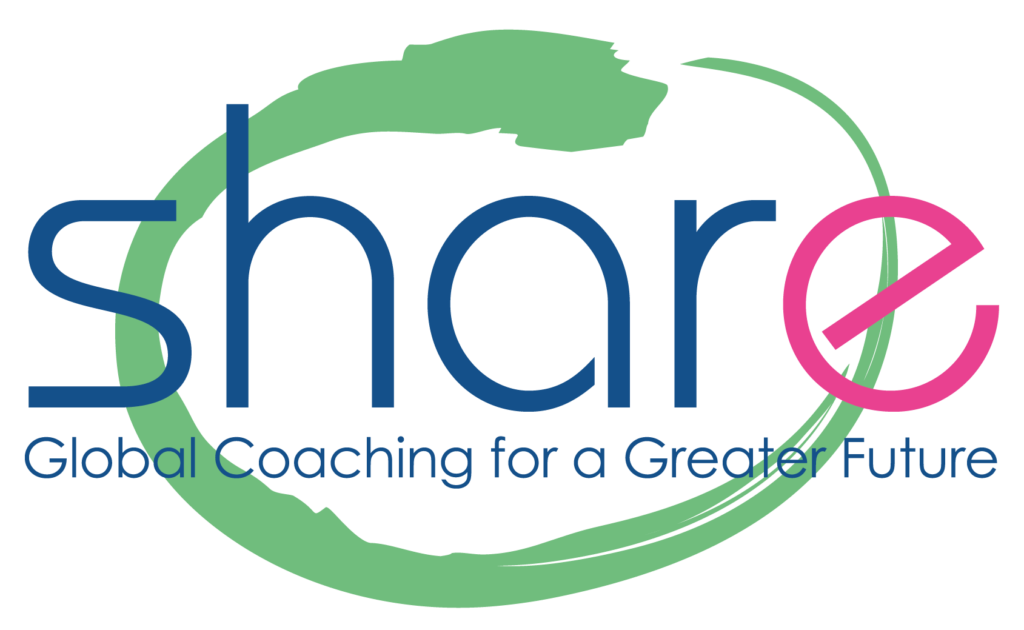Developing our teams and finding new ways of working together have taken on a new urgency as we adapt to living in a Covid world. In this series of four posts we look at how to develop an impactful learning culture that can transform your organization from within – despite what is happening in the outside world.
Employees and executives are more and more reluctant to spend their time in 2-3 day training program. The world around them doesn’t stop because they need to attend training. At the same time lifelong learning is a key success factor for any professional: individuals who continue to learn are happier at work, they have more chances to get promoted and to find a job.
So, how to solve this dilemma? How to make learning more efficient so learners get faster and more effective benefits from their time spent learning? In this third article you’ll find the answers.
This series of articles will be followed by a seminar on November 18th at 12pm EST – 6pm CET. You can register by clicking here.
How to Make Learning Stick and Applicable
As we mentioned in our first article in this series, employees and executives are more and more reluctant to spend time in a 2-3-day training program. Of course, we could say that they SHOULD take more care of their own development and put the blame on their inability to see how key it is to continuously learn in order to ensure employability and career evolution. But if we take a look at how their days are organized, it’s true that to stop and pause for a workshop, training or seminar is at the expense of their own work-life balance. Often times after spending their day in a said program, they then need to catch up with their emails and work in the evenings. The world around them does not stop because they need to attend a training program.
But at the same time lifelong learning is a key success factor for any professional. Studies show that individuals who continue to learn are happier at work, they have more chances to get promoted, they find a job quicker than individuals who don’t take care of their own development.
So, how to solve this dilemma?
Linked to this question is how to make learning more efficient so learners get faster and more efficient benefits from their learning time?
I. Integration of learning and work
Learning professionals aspiring to build a dynamic learning organization:
- 93% want to integrate learning and work (up from 80% in 2015)
- 95% want to respond faster to the speed of business
- 98% want to support the sharing of good practice
- 90% want to play an active role in supporting business innovation (up from 80% in 2015)
To do so, learning needs to become everyone’s priority, not just that of L&D professionals. The first and most important key success factor to have a more efficient and applicable learning journey is to have it close to business needs and to co-design it with the business stakeholders.
Studies show that companies who have the most impactful learning systems:
- Analyze business problems before recommending a solution
- Use stakeholders steering groups to support design
- Involve key stakeholders in the learning communication plan
- Deliver learning in time to meet business needs
- Proactively understand how staff learn
- Have a culture that supports learning from mistakes
- Are looking to integrate learning into the workflow
- Want to speed up the application of learning into the workplace
If we look at the learners’ perspective, today they complain that learning is uninspiring (35%) or irrelevant for their needs (26%). Learners are looking for quick answers, immediately applicable on the job.
II. Adaptive learning and its challenges
If we continue to look to what learners want and actually already do, we observe that they are looking for what is called “adaptive learning” which has the following characteristics:
- It’s self-paced: the learner decides when and where he wants to learn
- It mainly happens on a mobile device (smartphone and tablet)
- The sources are online and free to access: Youtube videos, TED talks, MOOCs, articles, etc.
One of the first undeniable benefits of introducing digital learning is the improvement in program reach. No longer are those that can be freed up for classroom courses the only ones able to benefit from job-related training.
Basically, the first reflex most of us have when facing an issue is going on Google and waiting for a quick tutorial or article with a hands-on solution. The immediately applicable on-the-job factor is the one which makes learning stick over time, as if for learning we need not only our brain to learn the information but also our hands to put it into practice. It’s linked to what we mentioned in the previous article about uniqueness and learning by experiencing concepts.
Mobile learning presents evident advantages, such as increased learning access and flexibility, reaching more people, reducing training costs, and reducing training delivery time.
But other questions arise on the learner side as well as on the L&D department side.
The learner is more and more challenged to find content which is relevant to their job needs, readily applicable and short enough to make them save time.
The inconvenience of having a multitude of learning content is “too much choice leads to no choice”. If the learner takes too long to look for the relevant content, the advantage of mobile learning as a time saver diminishes considerably.
What contributes most to a smooth and successful online learning experience?
Ranked in the top three factors by learners:
- 79% the overall quality of the learning design
- 78% online elements are easy to use and navigate
- 77% relevant and timely for my work situation
However, one in four learners report that they cannot find what they need.
This leads to new challenges for the L&D departments in order to keep learning accessible and efficient:
- Provide appropriate and timely content
- Basic design – harnessing technology appropriately
- Keep it clean: clutter can slow down efficiency gains resulting in disengaged learners. Regular reviews and careful selection make a real difference at this stage.
But, on the other side, studies show that L&D staff lack resources to manage learning, to implement and manage e-learning and to renew the learning modules to always keep them relevant to business needs.
III. Mobile learning
The use of information technology is increasing:
Top technologies and their % use
| Live online training | 89% |
| E-learning content | 88% |
| Surveys and questionnaires to help understand learning transfer | 80% |
| Internal/enterprise wide information services (i.e. SharePoint) | 79% |
| Learning Management Systems | 75% |
| Communication tools (chat, IM, SMS, newsletters, forum…) | 74% |
| Online assessment | 71% |
| Video | 69% |
| Mobile devices (smartphones, tablets, …) | 67% |
Mobile learning generates an entire change of attitude about how content is designed and delivered. It also raises the need of understanding the mobile behavior of the target audience and acting accordingly.
Learners prefer mobile devices because they are convenient, always accessible, everywhere, and easy to use. But multitasking is also a key component. Users want to move effortlessly from text messages, to learning, sharing, and being productive. They want to move seamlessly from text to videos, to reference websites: the learner is now in control of their own learning!
When designing training for mobile devices, these factors are to keep in mind:
- Space is key: reduce sentence size, for example
- Readability: reading on a computer is not the same as reading on a smartphone, text size is key
- Bite-size content: instead of a long 60 minutes lecture, better to have short chunks which are also quicker to download or access with an internet connection
- Easy to search information
- Keep it simple: one topic per screen
IV. Collaborative learning
Despite the increasing use of smartphones for learning, learners value the integration of technology with face to face learning. Among the tactics to improve training efficiency, 45% of the respondents to the study agree that their face to face training actively builds on knowledge gained through online training. Blended learning is on the rise by combining online and face to face learning as a way to ensure the applicability on the job. Links between the learning content and the job happen by talking to other fellow learners, sharing experiences and ideas.
Line managers also have a role in providing support in the application of the learning in the workflow. 64% of learners say that direct pre and post learning support from their line manager is one of their top factors for a smooth and successful online learning experience.
Networking is also a key tool to make the online training effective. Learners are keen to share what they know and to learn from others in turn. 61% of learners are motivated to learn online by using technologies that enable them to network and work with others. All generations (Gen Z, Millennials, Gen X, Boomers) feel motivated to learn from each other.
In the learning landscape:
- 86% find working in collaboration with other team members essential or very useful
- 82% find general conversations and meeting people essential or very useful
- One in two learners rank collaboration in their top three factors contributing to a smooth and successful online learning experience.
- 80% are willing to use technology to share their knowledge to help others learn
- 61% are downloading and using mobile apps for social networking
V. Importance of line manager and marketing
The mobile mindset and the large amount of learning modules available online increase the content competition and, as we mentioned, the issue of choice overload.
Basically, L&D departments need to address the question: how can we make the available learning accessible and desirable?
Two key success factors are highlighted in the studies:
1/ The importance of the line manager to influence staff to learn. 48% of learners say that it is their manager or director that would most influence them to learn online.
2/ The role of e-marketing to promote learning. This means that the L & D department needs to evolve from content focus to marketing focus in order to attract learners. One of the main challenges for any organization is to stay relevant on their market with a workforce who has the required skills for meeting the market evolution.
VI. The L&D challenge
Since the landscape of learning is changing quickly, L&D will enhance their impact by focusing on what they can really control : to listen to the business and their ability to anticipate the business needs to be ready to provide the workforce with the appropriate content. They also have a playground in creating and facilitating forums of common interest, where staff can connect to find individuals having the same issues to solve. People will always need the human touch to bring their knowledge to life!
Finally, they also play a major role in influencing the line managers to become active learners in order to encourage their teams to learn, thus the importance of introducing marketing into the L&D landscape.
In our next post – on November 10 – we will look at the organization and the role that each person plays in the learning process.
Authors
Anna Gallotti, Selika Cerofolini, Jody Julien & Jo Leymarie.
Bibliography
2016-17 Learning Benchmark Report. Towards Maturity. Nov 2016.
Workplace Learning Report. Linkedin 2019.
Committee on Developments in the Science of Learning. How People Learn. National Academy Press. Washington, D.C., 2004.
Biographies:
Anna Gallotti
Anna Gallotti has 20 years of experience as an Executive Coach. She is the founder of two coaching companies, one based in Paris (since 1999) and one in the United States (since 2013). She recently also founded a micro-learning based company with worldwide exposure.
Italian, she lived 20 years in Paris. Since 2013 she has been living in New York and has been working between Europe and the United States. In 2001 Anna received her first coaching certification in Paris. In 2009 Anna became a Master Certified Coach +5000h coaching), examiner and mentor coach for the International Coaching Federation (40 000 members worldwide). She is also Vice Chair of the ITL Global Board at International Coaching Federation whose mission is to study the future trends of coaching and the impact of coaching.
Anna holds a BA in International Law at University of Milan (Italy) and a MA in European Law at University Paris V (France). Anna is co-author of 3 books: “Make the right Choices” (in English, French, and Italian), “L’art et la pratique du coaching professionnel” (in French) and “Coaching for Leaders” (published in Q4 2020).
For more information, go to: www.share-coach.com and www.welead-coaching.com
To contact Anna: anna.gallotti@share-coach.com
Selika Cerofolini
Selika Cerofolini is a Certified Professional Coach through the Coaching for Transformation program. She founded Joyful Path, a holistic coaching practice devoted to approaching personal and systemic evolution with a deeper look, a compassionate heart and a broader vision, for the benefit of the individual and the collective. Prior to shifting her career entirely to coaching in 2018, she held managerial roles in Development and Communication for Art Institutions for 7 years, while pursuing her interests in psychology, philosophy and along with a devoted meditation practice. Originally from Italy, she holds a BA in International Communications and an MA in International Relations and Diplomatic Studies from the University of Perugia (Italy).
Selika lives and works in New York, and you can reach her at selikac@joyfulpathcoaching.com. More information on www.joyfulpathcoaching.com.
Jody Julien
Born in the USA, Jody Julien holds degrees from Oakland University in Michigan and RIT in New York in the areas of International Business and Strategic Human Resources. Trained and certified in both Professional and Life Coaching with over 500 clients and +2500 coaching hours to date. Held global Operations and Human Resources leadership positions for more than 20 years in North America, South America, and Europe, and is currently based in Paris, France. She is the founder of J2 Coaching & Consulting since 2011, a global firm specializing in professional development and international organizational effectiveness. Jody is a keynote speaker for international organizations on the topics of Women in Leadership and C-Suite Transitions.
More information may be found at www.J2coaching.com or by contacting Jody directly at jody.julien@j2coaching.com.
Jo Leymarie
Born and educated in Britain, Jo Leymarie holds a BA in Law and French from the Metropolitan University in London. She has lived and worked in France for the last 30 years.
Jo has 25 years of business experience setting up and managing profit centres in France for international companies. She founded Walden, a coaching and consulting company, in 2015 to support managers and teams during transformations and to contribute to building a people-centred workplace.
She is a member of SOL France (Society for Organizational Learning) and her core subjects include sustainable leadership, organizational learning and diversity and inclusion.
You can contact her at jo@waldencoaching.fr, www.waldencoaching.fr.



